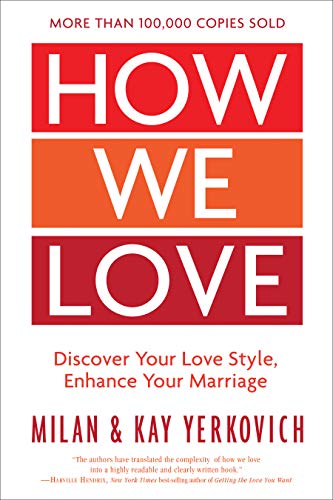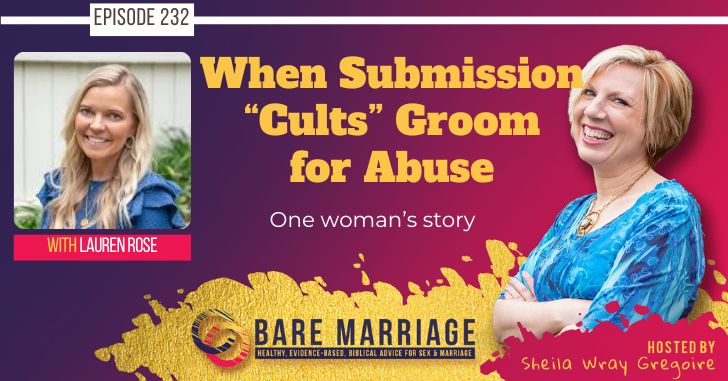If you know you have an unhealthy attachment style, how can you grow and change?
It’s the last day in May, and so I want to wrap up our posts about attachment styles. I’m so glad so many of you have found this concept helpful; it’s really changed how I see the main purpose of marriage advice for sure!
We’ve talked about how we can have different attachment styles, some of which are secure and some which aren’t. And everything’s on a spectrum, too! You can have a mostly secure attachment style, but still have some things to work on.
As we talked about in our podcast with Milan and Kay Yerkovich, authors of How We Love, our attachment styles can cause a lot of friction and distance in marriage. If a Pleaser (someone with an anxious attachment) is married to an Avoider (someone with an avoidant attachment style), then you’ll have this recurring conflict where the pleaser wants to share everything and try to convince themselves the relationship is secure by becoming super close, but the avoider feels threatened and cornered when feelings come up, and so this causes them to retreat even more. And so on, and so on.
We’ve done a good job this month diagnosing the problem. But what do you actually do to fix your attachment style?
Well, let me tell you a story. For about eight years now I’ve had recurrent back pain. It’s not there all the time, but it’s triggered when I spend a day on my feet. It’s always the exact same muscles on my right side that spasm, and the constant spasming makes my heart rate increase and my breathing super shallow and it’s awful.
I thought it was due to poor posture (I have awful posture), but it’s always on my right side. And recently I’ve realized that I walk wrong.
On my right side, my foot is always slightly turned towards the right, rather than pointing straight ahead. When I walk, my hips sway to the left, and then back to–centre. They don’t sway to the right (or only slightly). It’s only a really small difference, and you wouldn’t even notice it to look at me, but in examining things closely I’ve figured this out.
So I’m going to a physio appointment tomorrow, and I’ll likely have to get orthotics, but I’m excited because we may actually have a solution and a plan! I don’t want to become debilitated as I get older, so this is great. I know I’m messed up, but it’s a huge relief. If there’s a REASON that my back does this, then I figure there’s a potential solution too.
When you think about it, though, I can sum up the problem, and the treatment, like this:
What I naturally do, that feels completely normal to me, is hurting me. I need to learn how to walk again–I need to forget what I know about one of the most basic things that we do, and I have to start consciously doing it differently.
It’s going to be difficult, because it’s going against everything I feel is natural and normal. It’s going to take time and effort to develop new muscles. It’s going to feel weird and wrong for a long time.
But if I want to live life to the full where I’m not in pain, I don’t have a choice. There is no other way forward.
That’s what it’s like with attachment styles too.
Trying to grow out of unhealthy attachment styles and develop healthy ones means going against what you feel is natural.
It’s going to feel awkward and wrong. But there is no other way forward!
Let me summarize today the plan the Yerkovichs lay out in How We Love about how to grow your attachment style (or love style as they call them).
They call it the Comfort Circle. It’s composed of “new steps” in the dance that you tend to dance with your spouse, where your unhealthy attachment styles hit up against each other, causing distance.
Instead, we’re going to seek to understand the emotions that are below the surface, and bring healing to that area of the person’s life so that they feel bonded and connected. What causes attachment styles to be so difficult to break is that we are always trying unconsciously to repair distance, but we do it often in the wrong way, because we don’t understand the source of the distance.
So Avoider styles run away from feelings because they learned that expressing feelings causes others to withdraw from them. They learned to cover up their feelings and ignore them. Pleaser styles may not share their real feelings, but may morph into something else to try to get someone else to like them, but end up hiding themselves. And so on.
How do you break these patterns? You learn how to bond properly with your spouse. And that’s where these steps come in.
Many of us don’t remember receiving comfort as children. But what if our spouses could give that comfort? We don’t remember being seen and understood as kids. But what if our spouses could see and understand us? Wouldn’t that change everything?
And if you could be totally honest with your spouse, and your spouse still loved you, wouldn’t you finally feel accepted and loved?
The Comfort Circle has 4 new steps to learn, but they grow that bond to help you feel connected.
It looks like this:
The Comfort Circle Steps
1. Seek Awareness
Partners discover their feelings, underlying needs, and triggers.
(Basically, you learn about why your partner has this love style, and what often causes them to disengage, clam up, or panic. What are their man feelings when this happens?)
2. Engage
Partners decide to bring their new awareness into the relationship.
(Once you understand why you do the things you do, practice being a safe person and being honest with each other).
3. Explore
The speaker shares while the listeneer clarifies by asking further questions. The listener responds with understanding, validates the speaker’s feelings, and offers to meet the needs of the speaker after asking the question, “What do you need?”
(Practice extended listening and helping your spouse understand new things about themselves, just as you understand more).
4. Resolve
Resolution brings relief. The speaker offers some closure, which may involve negotiation, problem solving, compromising, owning, confessing, and forgiving. Sometimes it involves comfort and nurture. The speaker’s needs are met or deferred until an agreed-upon time.
(Learn how to support and encourage each other, analyze and solve problems, and feel closer).
How We Love has several chapters dedicated to what these steps mean and practically look like, and I can’t summarize them all, but they’re really good and highly practical!
I’d like to focus on just one to show you what I mean: Extended listening, which falls under the “Explore” step.
Extended listening helps you understand your spouse, and helps you draw out what they’re really feeling so they understand it too.
Here’s how it works: Make one of you the speaker and one of you the listener. They explain listening as similar to kung fu lessons. They report how in kung fu you often have to hold a position for several minutes. For the first few you don’t really feel it. But then you REALLY do, and that’s where the real work, and real benefits, come in. And once you practice holding that pose, your endurance builds.
Listening is like that. You’re not focusing on responding or being understood yourself. You’re merely going to keep listening and asking clarifying and probing questions, to the point where it almost seems awkward, because it’s once you’ve pushed past the resistance that the real work is done.
Here’s a story that describes how this worked in their own marriage:
I could tell Kay was distraught, and I knew she was processing some feelings about her past. I took he rhand and said, “We need to talk; I can tell you are really upset.” So we sat in the middle of the bed together and rayed briefly for wisdom. I said, “What hurts the most inside? You can say anything you want, and I’ll listen and try to understand.” What happened next was as incredible as it was nerve-wracking. Kay sat there for at least ten minutes without saying a single word. an introvert who processes thoughts and feelings internally, Kay was reviewing things, going over them with deep sighs, and staring out the window.
My biggest challenge was to keep my mouth shut and allow the silence to continue indefinitely. Man, it was oppressive. When she finally did speak, it startled me. She then began a catharsis that covered years, places, people, and events. When she shared about events or situations, I asked her to tell me more. If she talked about a person, I said, “Pretend I am that person and say to me what you would like to say to him or her.” Man, it was hard, and it was disconcerting. I had never seen that much emotion come from Kay. I felt as if I were caring for a child with the flu as I dodged projectiles and tried to comfort her as she thrashed and kicked.
My emotions were all over the map. I felt strength, concern, terror, sympathy, lack of control, compassion–all the while I was repeating inside, “Help me, Lord!” Eventually after ten hours of this–okay, just kidding; actually it was only about an hour–Kay let me hold her, and she cried in my arms. I laid her down on the bed, and she soon fell asleep…I also felt closer to her than I ever had. I felt I had seen her soul.
Now, not all sessions are like that! But I tell that story to show that it wouldn’t have happened had they not spent 10 minutes in silence at the beginning.
Sometimes it may not be silence that’s needed, but probing.
- If you’re the speaker, use a feelings word bank to try to explain how you feel if you just can’t get a word beyond sad or angry.
- If you’re the listener, learn how to use clarifying questions (there are lists of them) like “what happened next?”, or “how did that make you feel?”
- Use validation statements to help your spouse feel seen and heard.
Because isn’t that what we all want?
And you can ask those clarifying questions and use those validation statements even if your spouse doesn’t want to talk about attachment styles. Even if they’re not totally on board, you can still practice some of these techniques.

One of the things that often helps with people who have a hard time understanding their own emotions is to use emotionally clarifying words. Here are just some examples:
- That sounds both infuriating and frustrating.
- You look like you must have felt quite helpless. Does that sound right?
- I want to understand better. Do you think you felt more powerless or more disappointed?
- If that had happened to me, I would have felt so alone. Is that how you felt? Or was it more that you felt unseen?
So many of us can only identify very vague emotions, like “angry” or “sad.” But when we can zero in on what the actual emotion is, then understanding and healing can more easily take place. Again, a word bank of emotions is a great place to start!
It feels strange to start using new muscles.
It feels strange to talk about feelings when you’re used to avoiding them (and the book tells you what to do if you’re willing but your spouse is not!). It feels strange to be honest when you’ve spent your life trying to please others so they won’t leave.
it’s scary and hard.
But if you want connection, you have to go through it!
The Yerkovichs have a video on what the Comfort Circle looks like. And I encourage everyone to pick up How We Love and work through it with your spouse. It’s actually fun to realize there’s a reason you’re the way you are! But also that there are tools that you can use to help you feel closer and more connected. You don’t have to be stuck here, and distance doesn’t have to be your life story.
In the Yerkovichs’ list of Love Styles, I’m a Vacillator.
Or perhaps I should say, I’m slightly a Vacillator. Because I think I’ve grown a lot over our marriage, and I don’t react in the same way that I did before. We do have much healthier communication.
My husband was a mix of a Vacillator and a Pleaser, and he too has grown a lot.
So all of that to say–you don’t have to stay stuck. Things can change. And it is so beautiful when they do!

What do you think? Have you grown in your attachment styles? Or do you feel like there’s still a lot of growth to do? Let’s talk in the comments!


Sheila Wray Gregoire
Founder of To Love, Honor and Vacuum
Related Posts
What is the Window of Tolerance? And What Does It Mean about Sex?
The window of tolerance concept helps highlight emotional health. On a recent podcast episode, I...
7 Ways Churches Can Help People Going through Divorce
with thanks to Brazos Press and the book Forgiveness After Trauma for sponsoring this post....
What Does Accountability Look Like When Someone Hurt You?
Accountability is a necessary part of forgiveness and reconciliation. And yet often it’s...
When Evangelical Misogyny Goes Viral: “Stand Where He Wants You to Stand”
So a funny thing happened to me last week regarding that Josh Howerton video... First, I should be...
PODCAST: Why Evangelical Honeymoons Go So Badly feat. Jay Stringer
Is the honeymoon all about the guy FINALLY getting sex? Nope. But too often evangelicals talk like...
What Does It Mean to Lament After Betrayal?
With thanks to Brazos Press for sponsoring this post. Forgiveness is possible only after we’ve had...
Smells Like Jezebel Spirit: Can We Please Stop Calling Women Jezebel Spirit?
Some awfully bizarre things happened at the recent Strong Men’s Conference–and Jezebel made an...
Fact Checked It: Are Teen Girls Asexual?
Do teen girls have a sex drive? I’m desperately hoping that you answer, “Of course!” Now,...














When I first got married I had a similar sort of thought about being married! “Finally I feel seen and understood like I never did before.” And when I cuddle with him in bed, I feel my inner child curl up and purr! But I assumed that would be a creepy thing to bring up. Feeling like a child when cuddling…..so I’ve ne shared with anyone. And I’ve tried to ignore it.
Also I think his being a people pleaser, might be why our discussions? Always seem to end in 80-90% my preference! I don’t try to be bossy, or controlling it just always ends up that way. It’s got to be related! And any time I bring up faults, he sees it as the end of our relationship.
(But his mom hopped from relationship to relationship….so he’s not used to difficulty not resulting in that.)
Thank you for this!
I’m glad to see that they suggest waiting for an introvert to process. I do not do well when I think out loud; I can, but I get derailed by inevitable questions and even if I don’t, it’s stressful.
Shelia, I’ve been working with a homeopathic doc for 2.5 yrs as we have been on a journey to all of my health, spiritual, and mental issues. Since March on, everything you keep sharing has gotten me to the core of it all. Thank you, thank you, thank you from the bottom of my heart. Since I never attached to my parents….I didn’t know how to attach to God. You introduced me to God in a healthy way (Krispen Mayfield), then the How We Love book, which led me to How We Love Our Kids. My biggest dream as a little girl was to be a mama. That time came and it was like my kids gave me the middle finger. I hated everything about it. My kids basic needs were crushing to me in all areas. I got addicted to porn to avoid my responsibilities that I couldn’t do. I crashed and crashed time and time again. I’ve been a mom for 8.5yrs and it has been the darkest time of my life. Not at all what I expected. You’ve played a huge part in bringing me sexual freedom (stopped orgasming because of duty sex took over with birth trauma and littlekids), marriage freedom (hierarchy) we’ve always acted it out as equals, but in my mind…I was being rebellious. Stopped all forms of physical discipline with my children and slowly seeing me having bandwidth for having healthy relationships with my girls. They are so depleted emotionally from mom. (Still trying to find the parenting tools to make this be better. My 5yr old is really struggling with the lack of direction from me since there us no physical discipline. I’m struggling with separating the differences between consequences vs me being manipulative towards her. I’m trying not to crash with parenting here. Bless you sweet sister in Christ! You’ve been a vessel for God to change the whole course of my family’s lives!
My phone hasn’t been letting me check comments all day!!
For trying to correct your child training… I’d highly recommend Dr John deloney on YouTube. He’s actually taught me a lot about how children need to connect with parents. And how to get it going if you haven’t been! I think it’ll help you immensely with undoing the past and moving forward. And how to get it set up with the kids.
Biggest thing is he said to make everything about who you choose to be! As a parent, wife and family. Setting family values together and choosing to stick with them.
That’s so amazing to hear! Thank you so much! Keep your eyes out, because on June 21 we’re doing a free webinar with Wendy, who was on the podcast, about how to discipline with connection. I’ll be talking about it soon, and it may really help you!
Seek awareness: What are their man feelings when this happens? LOL 🤣🤣🤣😂😂😂sorry for getting such a kick out of your typo here – Recently, this lady at my work told me When I was looking for something and I couldn’t find it that I have guy eyes – just thought that was relevant here 😬